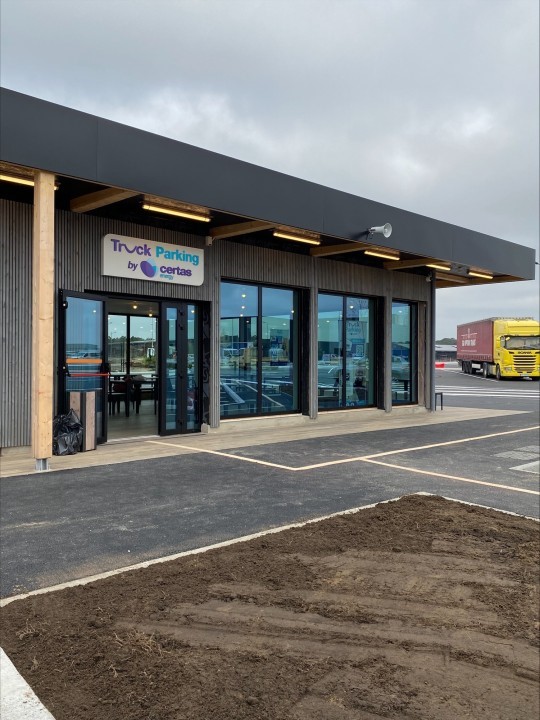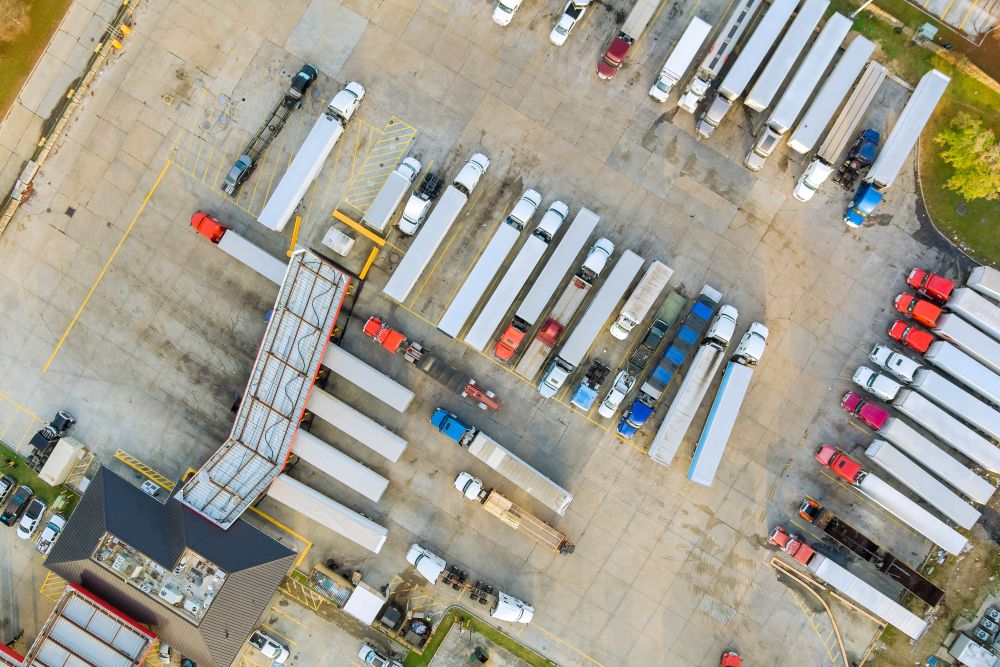
Josh Cousens
SNAP llega a Saint Geours-de-Maremne
Creado: 29/08/2024
•
Actualizado: 29/08/2024
"Es muy importante que los conductores hagan sus pausas en lugares seguros y protegidos, y para nosotros es inimaginable no ofrecer un confort adicional", afirma Charlotte Decouard, responsable de comunicación de Certas Energy Retail France.
Tras abrir su primer aparcamiento en Francia en mayo de 2023, Certas Energy pone en marcha su segundo aparcamiento de camiones de altas prestaciones en Saint Geours-de-Maremne. Hablamos con Charlotte Decouard para saber más sobre la nueva parada de camiones y su relación con SNAP.
Estacionamiento de camiones de Saint Geours-de-Maremne por Certas
La parada de camiones abrirá el martes 19 de marzo de 2024, ofrecerá 140 plazas de aparcamiento y aceptará pagos con la Cuenta SNAP.
Según Charlotte, "el emplazamiento está situado en la localidad de St Geours-de-Maremne, en la autopista A63, a unos 70 km de la frontera española. La salida de St Geours es por el norte y por el sur. La entrada al emplazamiento está a 300 m de la autopista.
"Este es el segundo aparcamiento de camiones de Certas Energy. El primero abrió sus puertas en mayo de 2023 en Montmarault (A71/A79) y, al igual que el primero, cuenta con duchas y aseos individuales, microondas, máquinas expendedoras, wifi gratuito, lavandería y, por supuesto, la posibilidad de pagar con SNAP."
Charlotte explicó que Certas llevaba dos años planificando la parada de camiones de Saint Geours, y que la instalación había tardado alrededor de un año en completarse.
Instalaciones
Como moderno aparcamiento de camiones, el nuevo recinto de Saint Geours-de-Maremne ofrece las siguientes instalaciones a los camioneros durante su tránsito por el sur de Francia:
Vallas de 1,80 m de alto nivel de seguridad
CCTV 24/7
Duchas y aseos
Distribuidores de bebidas frías y calientes
Wifi gratuito para estar conectado
Lavadoras
SNAP & Certas
SNAP y Certas Energy, que ya habían colaborado con éxito en el aparcamiento de camiones de Montmarault y en The Hollies, la parada del Reino Unido, deseaban reanudar su relación de trabajo en Saint Geours-de-Maremne.
Según Charlotte, "SNAP nos apoya en la mejor solución de pago, dándonos la posibilidad de pagar in situ directamente y adaptándose a nuestro aparcamiento."
Como uno de los principales expertos en seguridad de paradas de camiones, SNAP Access & Security trabajó para reforzar la seguridad de St Geours-de-Maremne.
Los técnicos de SNAP Access & Security han instalado cámaras ANPR en las entradas y salidas y las han sincronizado con las barreras preexistentes. El equipo también ha equipado la parada de camiones con terminales de pago SNAP, que permiten a los conductores pagar fácilmente sus sesiones de aparcamiento.
Según Charlotte, "la relación es muy buena y celebramos reuniones periódicas para hacer un seguimiento de los distintos expedientes relacionados con la instalación y las características del emplazamiento".
Seguridad
El aparcamiento de camiones de Saint Geours-de-Maremne by Certas también ha recurrido a expertos en seguridad locales para reforzar la seguridad de sus instalaciones y proteger a los conductores que se alojan en su parada de camiones.
Charlotte afirma: "Para aumentar nuestro nivel de seguridad, hemos instalado cables de choque en nuestra valla exterior.
"Además, hemos instalado cámaras inteligentes en el aparcamiento para detectar la intrusión de peatones en las barreras, y también hemos instalado cámaras inteligentes que detectan la presencia de coches en las entradas. En ambos casos, se envían alertas a nuestro circuito cerrado de televisión".
"En los próximos meses, acreditaremos nuestro aparcamiento mediante el nivel 2 o el nivel oro de PSR de TAPA".
Para obtener más información sobre el aparcamiento de camiones de Saint Geours-de-Maremne by Certas, visite snapacc.com/locations/SaintGeours-de-Maremne/.



